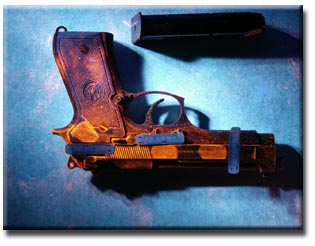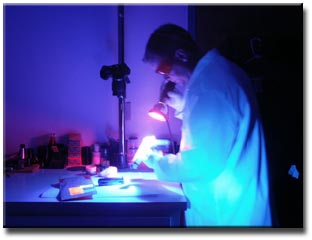
The Bay County Sheriff’s Office Crime Scene Investigators is comprised of sworn officers who have received extensive training in the documentation, collection and preservation of evidence. Training accomplished by our investigators include: Buried Bodies and Surface Skeletal Remains, Death Scene: A Forensic Entomology Workshop, Crime Scene Workshops, Science of Fingerprints, Latent Print Identification, Latent Fingerprints.
Workshop of Cyanoacrylate Techniques, 
Shooting Incident Reconstruction,
Forensic Photography, Bloodstain
Pattern Analysis with computer and
numerous FDIAI training seminars to include
Shoe and Tire Recovery, Explosive Devices,
Crime Scene Safety, Digital Photography,
Forensic Anthropology, Documentation of
Blood Spatter, Blood Spatter Interpretation,
Crime Scene Reconstruction, and
Evidence Presentation at Trial.
The responsibility of the Crime Scene Investigator includes examination of the scene of a crime, documenting the conditions present, and providing the investigators, attorneys and ultimately the jury, with an accurate depiction of the locations and relationships of items located within the scene. They determine the relevance of items within the scene and the evidentiary potential of the items as related to the crime under investigation. Crime Scene Investigators preserve and collect the items deemed potential evidence, as well as process the items of evidence that are not removable from the scene. These investigators deliver the evidence to the appropriate forensic examiner and then prepare a report detailing the actions taken at the crime scene.

The purpose of crime scene investigation is to help establish what occurred (crime scene reconstruction) and to identify the responsible person. The ability to recognize and properly collect physical evidence is oftentimes critical to both solving and prosecuting violent crimes. It is no exaggeration to say that in the majority of cases, the law enforcement officer who protects and searches a crime scene plays a critical role in determining whether physical evidence will be used in solving or prosecuting violent crimes.
oftentimes critical to both solving and prosecuting violent crimes. It is no exaggeration to say that in the majority of cases, the law enforcement officer who protects and searches a crime scene plays a critical role in determining whether physical evidence will be used in solving or prosecuting violent crimes.
Despite Hollywood’s portrayal, crime scene investigation is a difficult and time-consuming job. There is no substitute for a careful and thoughtful approach. An investigator must not leap to an immediate conclusion as to what happened based upon limited information but must generate several different theories of the crime, keeping the ones that are not eliminated by incoming information at the scene. Reasonable inferences about what happened are produced from the scene appearance and information from witnesses. These theories will help guide the investigator to document specific conditions and recognize valuable evidence.
information at the scene. Reasonable inferences about what happened are produced from the scene appearance and information from witnesses. These theories will help guide the investigator to document specific conditions and recognize valuable evidence.
Rev 06/01/2023
